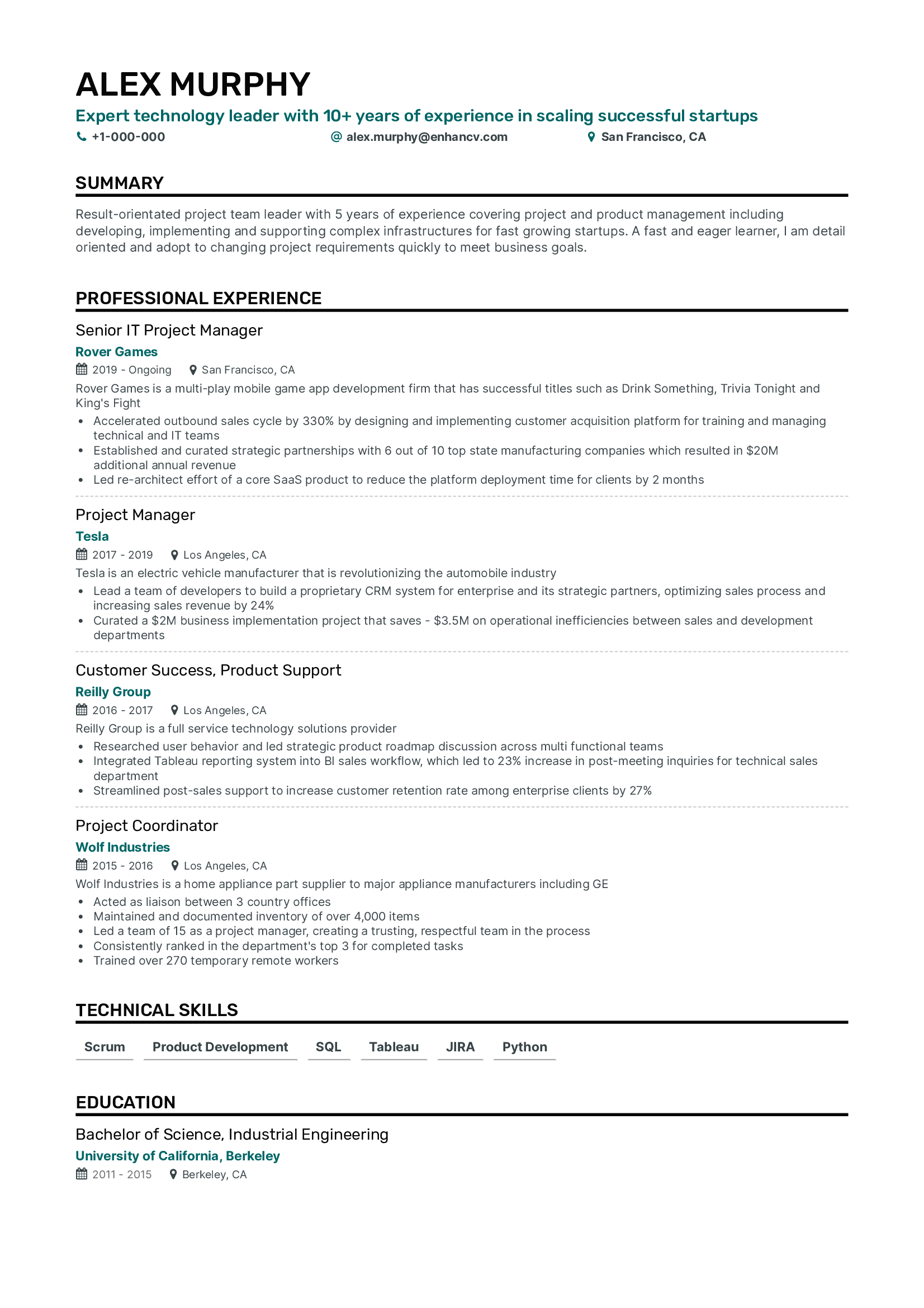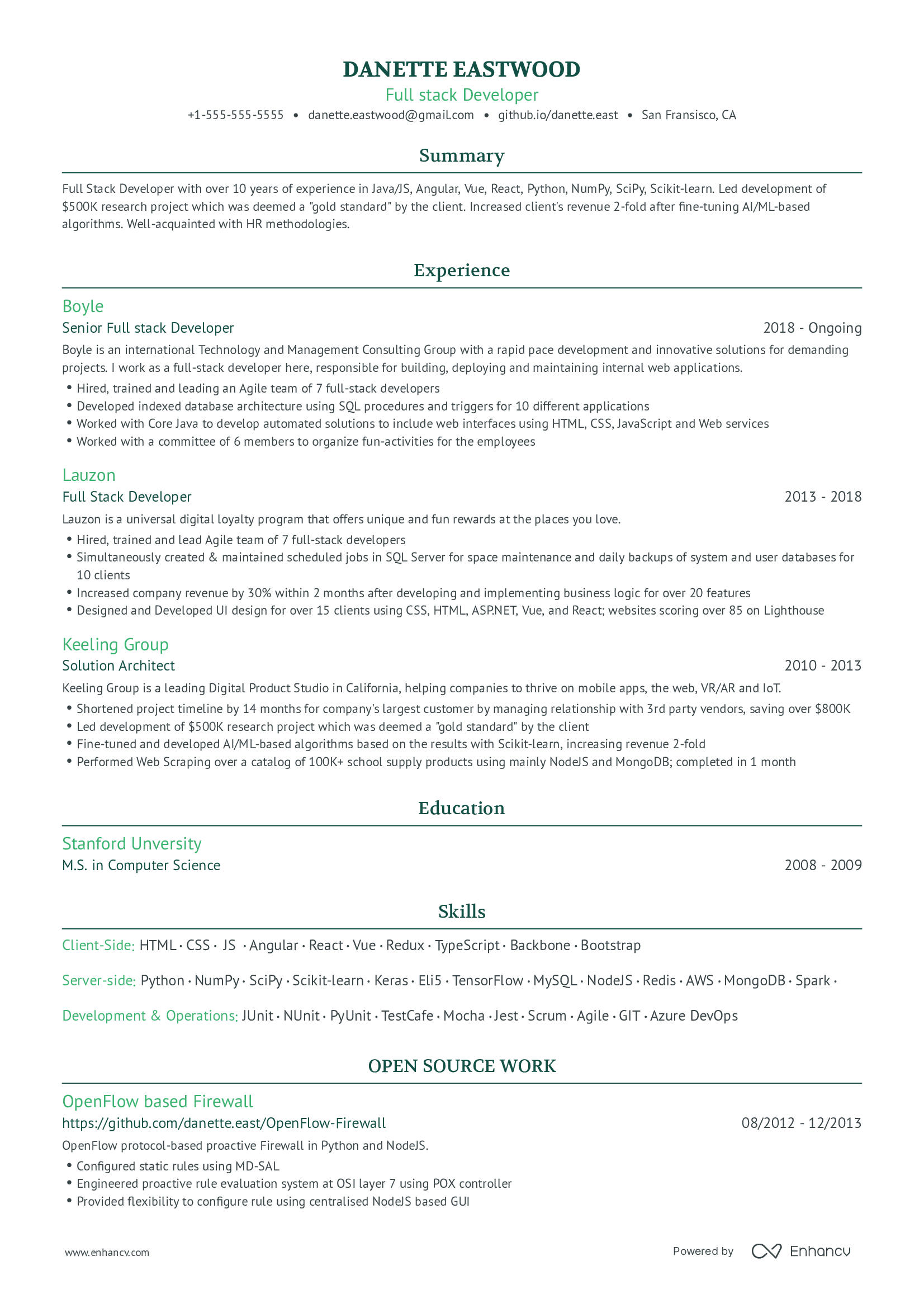Chronological Resume Templates
Classic chronological templates are popular for a reason - they do their job. Use one of the tried-and-tested resume formats below to secure your interview.

Double Column
Chronological resume template. Education position is reversed to focus more on the experience.

Single Column
Reverse chronological resume template. Classic one-column style for chronological resumes.

Timeline
Chronological timeline template. Additional line between job titles makes up for a clean and presentable resume.

Ivy League
Professional resume template. A sleek and straightforward design that conveys a sense of professionalism and competence.
What is a chronological resume template?
Chronological resume template is the most commonly used format in resumes, and recruiters prefer them to others. A reverse chronological order resume template lists your jobs, starting with the current or most recent one at the top. It provides comprehension opportunities for hiring managers to see your experience.
Have it in mind that chronological and reverse chronological resume templates are essentially the same thing. Because they list your experience chronologically, but in a reverse way, starting with your most recent job. You can use Enhancv builder to build your chronological resume in the best way possible.
Pro tip
Who should use a chronological resume?
People who can get all the advantages that chronological resume templates offer are jobseekers at any professional level with a consistent work history without gaps between roles.
However, reverse chronological order can work for just about anyone looking for a job. This resume formatting is simple and professional, and you can effortlessly apply it to any resume design.
Resumes in chronological order are very convenient for students because this formatting is the easiest way to organize their limited experience.
Choosing this format is easily understood by recruiters because chronological resume templates are the most popular layout hiring managers see.
A chronological resume is arranged in a way to emphasize your professional experience - your education and certifications, skills, other relevant activities, or volunteer experiences. A summary statement is optional in chronological resume formatting. Excluding the cases in which you are higher-level management or changing your current professional field.
If you think a chronological resume template is not a good fit for your case, you can try a functional or combination resume template. A functional resume is focused on your skills and abilities and lists your roles and education at the bottom.
A combination resume blends a functional resume and a chronological resume and emphasizes both your skills and experience in equal measure.
Tips for building the best chronological resume template
Let’s create your perfect chronological resume by following the best practices.
Design
The reverse-chronological format resume template can be applied to any design – modern or traditional. It only depends on your professional field and the type of company you are applying to. Modern design is appropriate when you are in more creative and innovative industries and want to make your resume pop up from the rest of the applicants. Use the traditional design without icons, graphics, and flashy colors for applying for positions in more traditional companies.
Font
The best font to use for resumes is a classic, easy-to-read font, like Times New Roman or Calibri. You can use modern fonts, which are also appropriate, like Helvetica, Verdana, Ariel, or Lato. Keep in mind that ATS systems don't mind the font as long as it's readible serif or sans-serif. The regular font size for resumes is 12 points. Larger fonts are acceptable for headings, your name, or titles of sections. If you're having trouble fitting your content on one page, you might try making your font 10.5 points, but don't go lower.
Colors
Your resume should be easy for the hiring manager to digest all your best work. Using the right font in combination with colors can help that. Use white as the background, black for the text, and the remaining color as an accent. It is advisable to use for the third color some shades of blue, green, or dark red. Avoid too flashy colors.
Select the best layout
Your resume should always begin with your full, searchable name. Your name should be the biggest thing on the page. Recruiters are spending a few seconds on your resume, they should know whose it is. Show your location, there is no need to put your full home address, but recruiters expect to see your city and state. Add your contact information like your phone number and professional and easy-to-read e-mail address.
As we mentioned before, for the Chronological resume template, you can skip the summary statement section. It can be a plus to add one or two sentences about who you are as a professional and what is your experience.
Your work experience section on the Chronological resume template is the most important one. You should include responsibilities and accomplishments for each job you’ve held. If you want your resume to stand out more, you can organize your experience in two separate sections. The first one, under the header “Relevant work experience” to a specific job you are applying for, and the second section is Work Experience.
Right after your work experience section, you should list your education in reverse chronological order first on the list you should add your academic degrees, following your training and certifications. Do not list your high school diploma once you have attended college unless relevant to your professional field.
You can list your achievements on a chronological resume template in your work experience section. If you can additionally emphasize your achievements, you can lay them out in a separate section. People who don’t have much work experience can use achievements in education, volunteering, or project sections. When you list achievements, make sure they include the time frame, scale, and results.
You can design your Chronological resume template in two columns to fit all information on one page. Recurred prefer one-page resumes because they are easy to scan for the key points they are looking for in a candidate.
Chronological resume templates pros and cons
Pros
- The chronological format is the most commonly used, and most recruiters prefer them. This resume format draws attention to your work experience and career advancements.
- A chronological resume template is the easiest format to read for ATSs because emphasizes your work experience by putting it on top of the page.
- This resume layout works for anyone looking for any kind of job, and it is student-friendly.
Cons
- Chronological format is not recommended for people with gaps in their work history.
- This format is not a good choice if you are applying for a position in a field in which you don’t have previews experience.
- If you are just starting your career, chronological resume formatting will emphasize your lack of experience.





